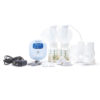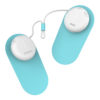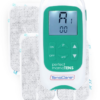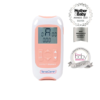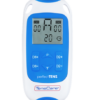Tips for Storing and Handling Your Breast Milk
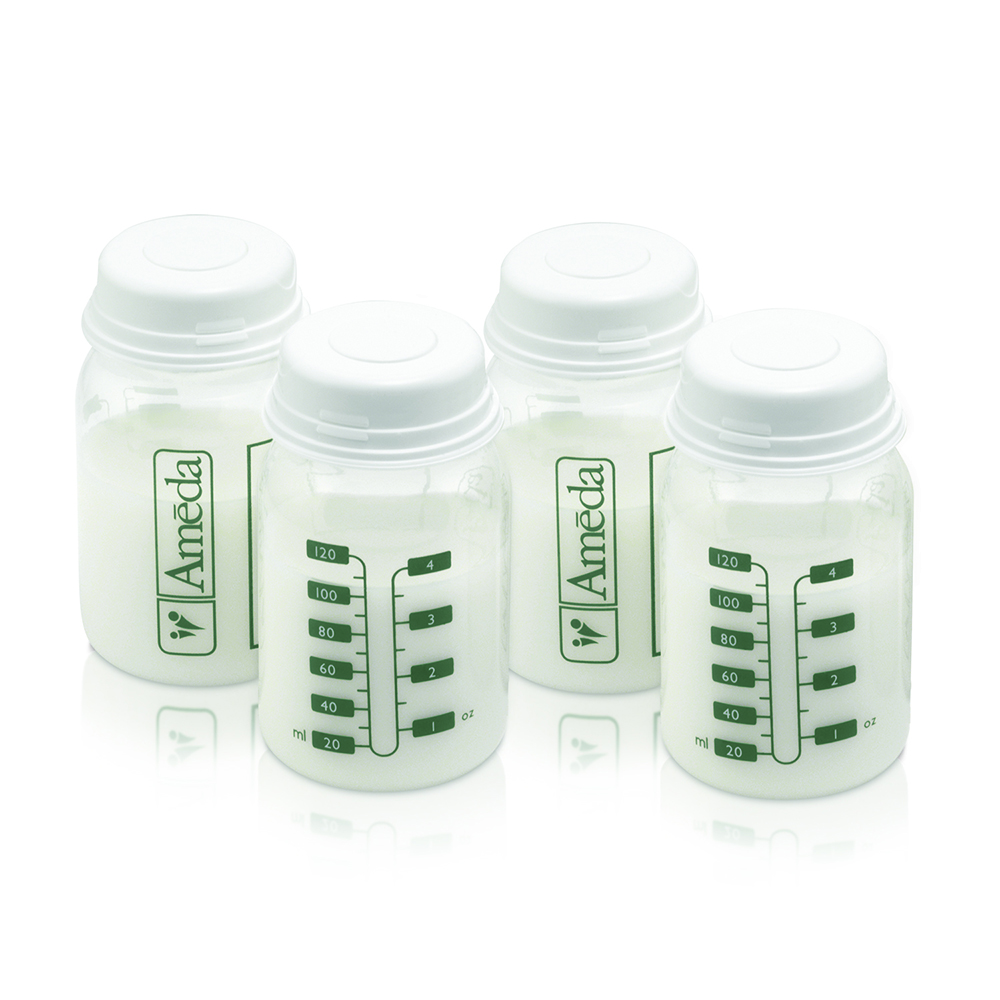
Tips for Storing and Handling Your Breast Milk
Whether you are an exclusive pumper or you only pump occasionally, it’s important to know the do’s and don’ts of properly storing, freezing, and thawing your breast milk.
What do I need to know about storing my breast milk?
Here we’ll answer some frequently asked question as well as offer a few tips and tricks for storing and making the most out of your breast milk.
What container should I use?
• Glass bottles with a leak proof lid or hard BPA-free plastic bottles work really well.
• Breast milk freezer bags are great if you’re travelling or have limited storage space available. Ameda Store n’ Pour bags are an excellent option and compatible will all Ameda kits. They allow you to pump directly into the bag, write the date, and pop it into your fridge or freezer.
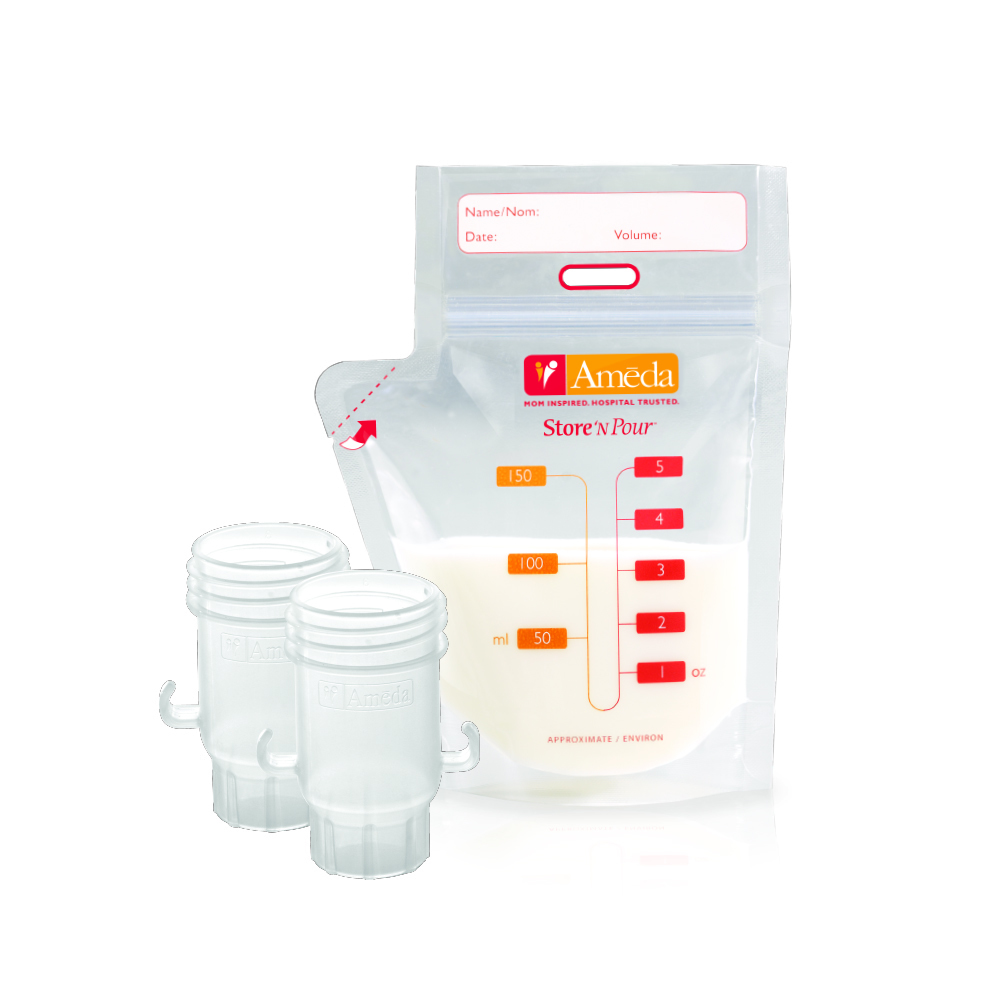
Avoid thin bottle liners. These are meant to be used as feeding bags, but not for freezing milk. The liners will often split when frozen.
How much breast milk should I store?
• Divide your milk into the smallest amounts your baby might take (e.g. snack size). You can always add milk if needed, but don’t save leftover milk after a feeding. When your baby takes a bottle, their saliva mixes with the milk which makes it unusable for future feedings. Storing smaller portions will reduce the possibility of having to discard any breast milk.
How long can I store my breast milk?
• If you follow the times on the chart below, you can keep your milk at room temperature, refrigerate it, then freeze it.
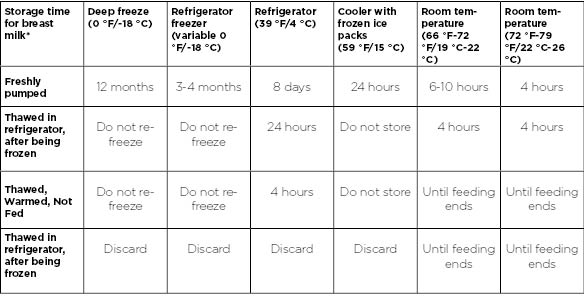
• Write the date and time on your milk container with a sticky label or non-toxic marker. Add your baby’s name if they are in daycare or in the hospital.
• You can combine milk pumped at different times. When combining milk from different days, write the date of the oldest milk on the container.
• If you plan to use your milk within 8 days, you can keep it in the fridge. Otherwise, freeze it in the coldest part of the freezer. Avoid storing in the door, the deeper into the freezer the better.
• Fresh is best. If you have just finished pumping, give your freshly pumped milk to your baby before thawing a previously frozen milk.
• Fresh milk can be added to cooled milk. If you are using frozen milk, you can add to it but be sure it’s cooled first and there is less fresh than frozen.
• Before freezing large amounts of milk, start with just a batch or two, thaw, and smell it. Some moms make milk high in lipase, an enzyme that digests fat. This type of breast milk has a strong, soapy smell when thawed. If this happens and your baby refuses the milk, you can deactivate the lipase before freezing by scalding the milk first. To scald your milk, heat it in a pot on the range until bubbles form at the edges, cool, and freeze.
Why do some milk storage guidelines differ?
Why can’t the experts agree? First, research confirms that your milk will not spoil before the times in the table below. But the longer your milk is stored, the more vitamins and antioxidants are lost. That’s why some breastfeeding books list shorter storage times. Those experts prefer you to use your milk sooner rather than later. But this doesn’t mean that your milk will spoil if you wait longer. It’s never a bad idea to give your milk as soon as you can after pumping. But what should you do if you find some stored milk in the back of the fridge that has been there for up to eight days? When in doubt about the freshness of your milk, smell or taste it. Spoiled milk will usually smell spoiled.
Why do I need to warm my milk before feeding it to my baby?
An older, larger baby can handle drinking chilled milk. But milk needs to be warm for a tiny baby. If a newborn is fed cold milk, it can bring down their body temperature. Younger babies need their milk warmed to between room and body temperature.
What should I know about warming and thawing my milk?
• Whether you’re warming chilled milk or thawing frozen milk, keep the heat low. High heat kills the live cells in your milk that help keep your baby healthy.
• Warm your milk to between room and body temperature under cool then warm running water. Be sure to keep the water away from the lid of the bottle so that it doesn’t mix with the milk. One method is to put the bottle in a bowl with sides lower than the bottle’s lid. Run warm water in the bowl. The warm water against the sides of the bottle warms the milk.
• Frozen milk can be thawed in the refrigerator.
• Your milk is not “homogenized” like the milk you buy at the supermarket so it may separate into layers. This is a natural occurrence and if it happens, simply give it a gentle swirl to mix.
HERE ARE SOME “DON’TS” TO KEEP IN MIND:
• Don’t warm breast milk in the microwave. It changes the composition of the milk and causes hot spots that can burn your baby’s mouth and throat.
• Don’t heat the milk in a pot on the stove. High heat can make your breast milk too hot for your baby, and it destroys the antibodies your baby needs.

